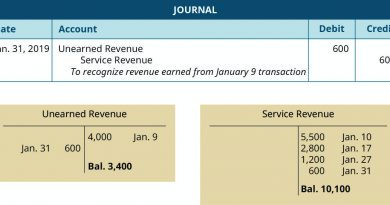Trillion Cubic Feet Tcf What it is How it Works Example
Trillion Cubic Feet (Tcf): What it is, How it Works, Example
What Is Trillion Cubic Feet (Tcf)?
The term trillion cubic feet refers to a volume measurement of natural gas used by the U.S. oil and gas industry. The measurement is usually abbreviated as Tcf. A cubic foot is a nonmetric measurement of volume also used in the U.S. A trillion—written as 1,000,000,000,000—cubic feet is equivalent to approximately one quad of Btu or a British thermal unit.
Key Takeaways
– Trillion cubic feet is a volume measurement of natural gas used by the U.S. oil and gas industry.
– Trillion cubic feet is abbreviated as Tcf in the industry.
– Trillion cubic feet is equivalent to approximately one quadrillion of a British thermal unit.
Understanding Trillion Cubic Feet (Tcf)
In the United States, companies measure natural gas in cubic feet. A trillion cubic feet can be hard to imagine. It can represent billions of dollars of the commodity. As mentioned above, one trillion cubic feet is the same as one quad of Btu. A quad is abbreviated for a quadrillion, or 1,000,000,000,000,000. A Btu measures energy and represents the heat required to raise the temperature of a pound of water by one degree Fahrenheit at sea level. For reference’s sake, a single Btu is the same as the heat from a kitchen match.
Most major international oil and gas companies have standardized reports for analysts and investors. This is due, in part, to a regulatory requirement with the U.S. Securities and Exchange Commission (SEC) for foreign companies with stock listed on U.S. exchanges. These companies must file standardized reports annually, called a 20-F. This is equivalent to the 10-K filing for U.S. companies and provides investors with oil and gas production and reserve statistics published using imperial measurements for direct comparison.
Investors in emerging markets, such as Russia, Africa, or Latin America, often receive reports with data reported in the metric system. Analysts of these companies will need conversion tables to accurately quantify and compare them to international operators.
Special Considerations
Within the oil and gas industry, units of measurement are represented by letters. T represents one trillion, B represents one billion, MM equals one million, and M means one thousand. These letters can appear before certain terms, such as MMBOE or million barrel of oil equivalent, or Tcf, which is trillion cubic feet.
Just as a trillion cubic feet is abbreviated as Tcf, a billion cubic feet is abbreviated as Bcf. The latter is a gas measurement equal to approximately one trillion (1,000,000,000,000) Btu. Mcf stands for one thousand cubic feet, a measure used more commonly in the low volume segments of the gas industry, such as stripper well production. Incidentally, Mcf is the conventional way to measure natural gas in the United States, which uses the imperial measuring system.
In Europe, where the metric system is used, the abbreviation most commonly used is thousand of cubic meters or Mcm. Oil and gas financial analysts need to be careful when analyzing companies’ results to avoid mixing up various units. For example, U.S. companies report in Mcf, while European companies often report in Mcm. This makes a difference because 1Mcm = 35.3Mcf.
Example of Trillion Cubic Feet
The U.S. Energy Information Administration reports the world’s natural gas reserves by country. As of 2019, Russia had the highest reserves of natural gas with 1,688 Tcf, followed by Iran with 1,194 Tcf. The U.S. was fourth with 465 Tcf. The list was rounded out by Belarus and the Czech Republic, which both reported 0.01 Tcf of natural gas each.
The U.S. Energy Information Administration reports the world’s natural gas reserves by country. As of 2019, Russia had the highest reserves of natural gas with 1,688 Tcf, followed by Iran with 1,194 Tcf. The U.S. was fourth with 465 Tcf. The list was rounded out by Belarus and the Czech Republic, which both reported 0.01 Tcf of natural gas each.



